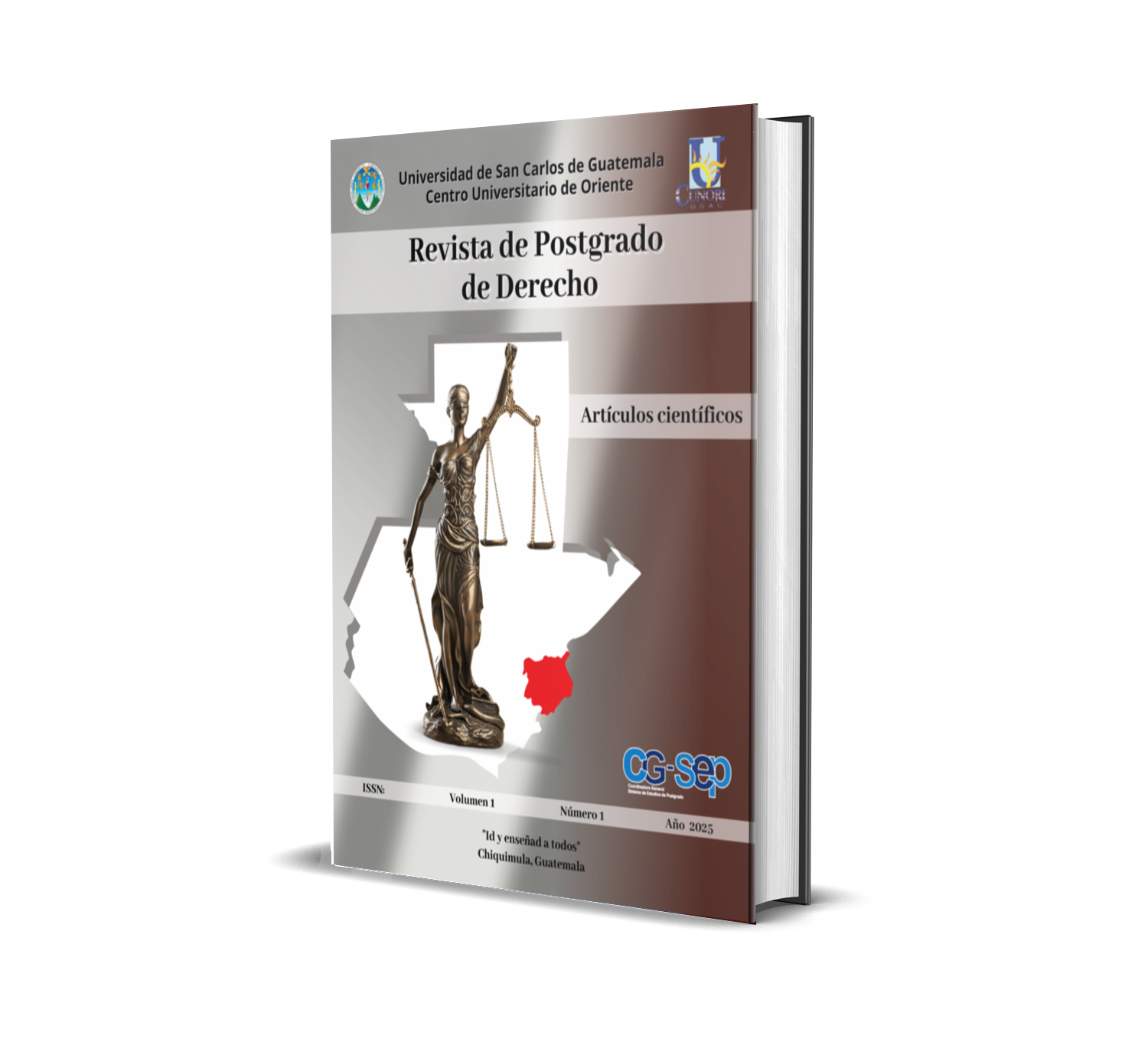The Evolution, Implementation and Definition of Information and Communication Technologies -ICT- in computer crime
DOI:
https://doi.org/10.36314/postgradosderecho.v1i1.2Keywords:
technologies, evolution, internet, cyberspace, cybercrimeAbstract
PROBLEM: the rapid evolution and adoption of Information and Communication Technologies (ICT) have transformed interaction, work, and communication in modern society, presenting challenges and opportunities in various fields, including cybercrime. OBJECTIVE: To analyze the evolution, implementation, and definition of ICT, as well as its impact on society and the commission of crimes. METHOD: the methodology used is based on the descriptive inductive and deductive method, involving a review of literature and previous studies on the evolution of ICT, its implementation in different sectors, and the definitions and conceptualizations of cybercrime. RESULTS: ICT has significantly evolved from the era of hardware-centered computing to the era of digital information. This evolution has led to the convergence of technologies such as computing, telecommunications, and media, facilitating global communication and the development of new technologies and services. However, it has also given rise to new forms of crime. Technological advances have improved education and the business sector but have posed legal and security challenges, especially with the proliferation of cybercrime. The dependence of governments and international organizations on computer systems makes them targets for crimes that threaten state security. CONCLUSION: the implementation and evolution of ICT have had a profound impact on society, transforming economic, social, and political relationships, and facilitating the commission of crimes. It is crucial to continue studying and adapting legal definitions and approaches to address the challenges presented by cybercrime, ensuring an adequate response to the growing dependence on technology in all aspects of life.
References
Beristáin, A. (2007). Víctimas del terrorismo: nueva justicia, sanción y ética. España: Tirant lo Blanch. https://editorial.tirant.com › libro › victimas-del-terroris...
Bolívar, S., Chiriboga H. y Maya, X. (2009). Ideario bolivariano: 350 pensamientos de Simón Bolívar: pensamientos militares, políticos, religiosos y filosóficos, generales, sobre sí mismo, sobre el pasado, presente y porvenir de Hispanoamérica: estudio histórico. Ecuador: Abya-Yala. https://escritores.org/libros/index.php/item/ideario-bolivariano-350-pensamientos-de-simon-bolivar
Casabona, C. M. (1988). Poder informático y seguridad jurídica: la función tutelar del derecho penal ante las nuevas tecnologías de la información. España. https://dialnet.unirioja.es/servlet/libro?codigo=130793
Castells, M. (2011). The Rise of the Network Society.Alemania: Wiley. http://socium.ge/downloads/komunikaciisteoria/eng/Castells%20Manuel%20The%20Network%20Society.pdf
Eguzkilore, S. S., (2009). El Delito Informático. Gobierno Vasco, 233-234. https://www.ehu.eus › 18-Hernandez.indd.pdf
Kurbalija, J. y Gelbstein, E. (2008). Internet governance: issues, actors and divides. Malta: DiploFoundation. https://books.google.com/books/about/Internet_governance.html?id=uhkbxgmEWu4C
Larrea Simball, L. J. , (2021) Tecnología de la Información y Comunicación en la Enseñanza del Derecho *https://orcid.org/0000-0002-7831-155X Tanya Tutiven Abad https://orcid.org/0000-0003-1112-4917 Recibido: 04 marzo 2021/ Aprobado: 28 agosto 2021.
Negroponte, N. (1996). Being digital. Reino Unido: Knopf Doubleday Publishing Group. https://books.google.com/books/about/Being_Digital.html?hl=es&id=ybmN9W22xxoC
Morales Prats, F. (1984). La tutela penal de la intimidad: privacy e informática. España: Ediciones Destino.
Published
How to Cite
Issue
Section
License
Copyright (c) 2025 Leonora Elizabeth Cordón Arrivillaga

This work is licensed under a Creative Commons Attribution 4.0 International License.
Authors who publish with this journal agree to the following terms:
- Authors retain copyright and grant the journal right of first publication with the work simultaneously licensed under a Creative Commons Attribution License 4.0 that allows others to share the work with an acknowledgement of the work's authorship and initial publication in this journal.
- Authors are able to enter into separate, additional contractual arrangements for the non-exclusive distribution of the journal's published version of the work (e.g., post it to an institutional repository or publish it in a book), with an acknowledgement of its initial publication in this journal.
- Authors are permitted and encouraged to post their work online (e.g., in institutional repositories or on their website) prior to and during the submission process, as it can lead to productive exchanges, as well as earlier and greater citation of published work.





